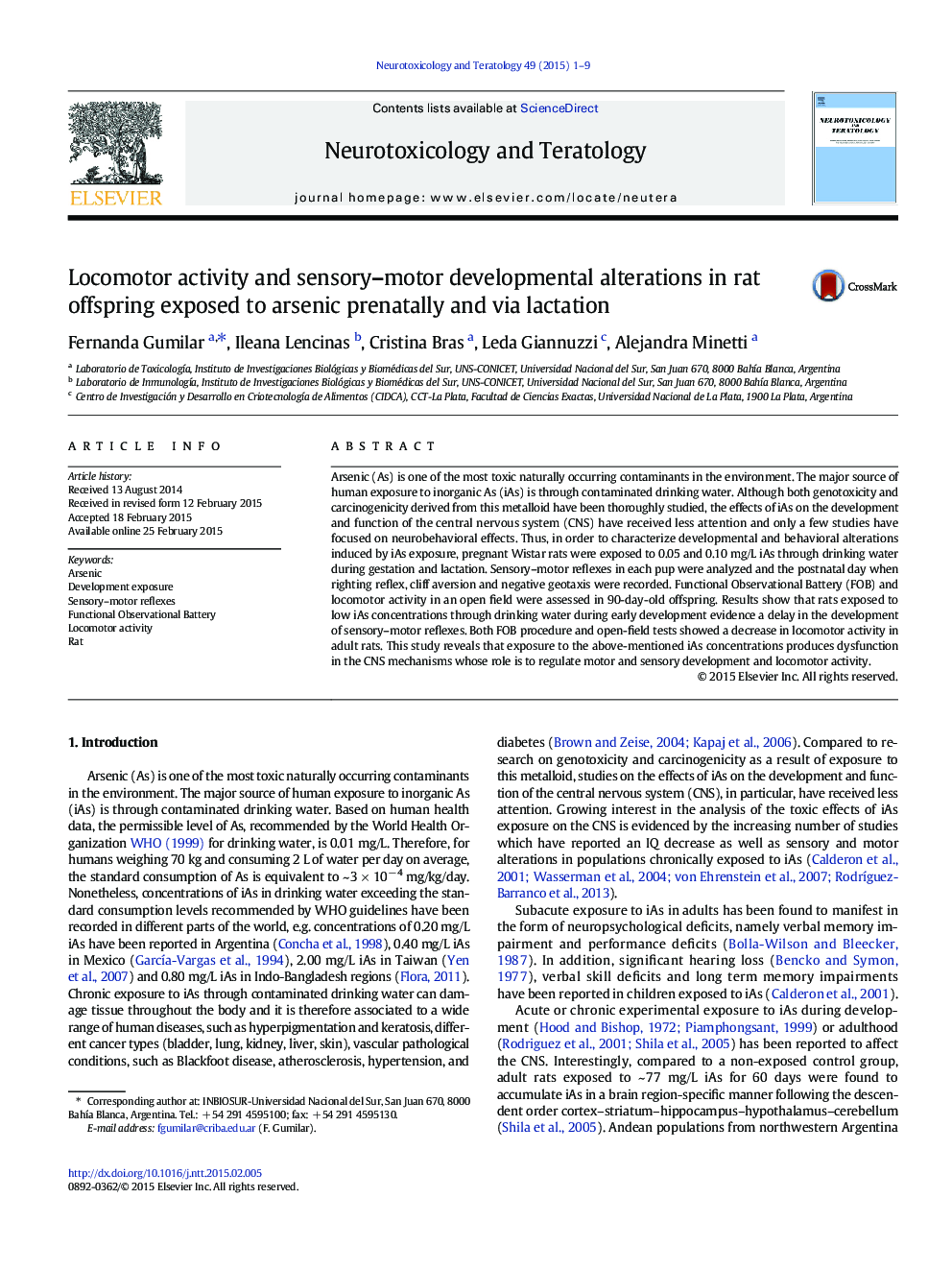| Article ID | Journal | Published Year | Pages | File Type |
|---|---|---|---|---|
| 5855563 | Neurotoxicology and Teratology | 2015 | 9 Pages |
Abstract
Arsenic (As) is one of the most toxic naturally occurring contaminants in the environment. The major source of human exposure to inorganic As (iAs) is through contaminated drinking water. Although both genotoxicity and carcinogenicity derived from this metalloid have been thoroughly studied, the effects of iAs on the development and function of the central nervous system (CNS) have received less attention and only a few studies have focused on neurobehavioral effects. Thus, in order to characterize developmental and behavioral alterations induced by iAs exposure, pregnant Wistar rats were exposed to 0.05 and 0.10Â mg/L iAs through drinking water during gestation and lactation. Sensory-motor reflexes in each pup were analyzed and the postnatal day when righting reflex, cliff aversion and negative geotaxis were recorded. Functional Observational Battery (FOB) and locomotor activity in an open field were assessed in 90-day-old offspring. Results show that rats exposed to low iAs concentrations through drinking water during early development evidence a delay in the development of sensory-motor reflexes. Both FOB procedure and open-field tests showed a decrease in locomotor activity in adult rats. This study reveals that exposure to the above-mentioned iAs concentrations produces dysfunction in the CNS mechanisms whose role is to regulate motor and sensory development and locomotor activity.
Related Topics
Life Sciences
Environmental Science
Health, Toxicology and Mutagenesis
Authors
Fernanda Gumilar, Ileana Lencinas, Cristina Bras, Leda Giannuzzi, Alejandra Minetti,
